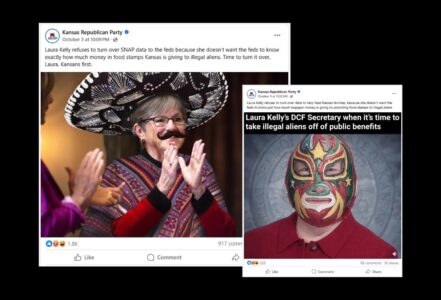The Tonganoxie Split: Myth lacks scientific backing but remains intriguing mystery

A tornado touches down southwest of Wichita, Kan. near the town of Viola on Sunday, May 19, 2013. The tornado was part of a line of storms that passed through the central plains. (AP Photo/The Wichita Eagle, Travis Heying)
More weather:
Take a look at our severe weather guide for more weather myths, plus safety tips and history on damaging tornadoes in Douglas County history.
If many people ever truly believed in the Tonganoxie Split, it’s a good bet that number dropped on May 11, 2000.
That’s when — instead of being waylaid by any natural terrain or old Indian curses — a tornado twisted through the little Leavenworth County town, causing $2.1 million in damage to more than 200 homes and nine businesses. Anymore, the Split is generally accepted as folklore instead of a weather phenomenon, if residents have heard of it at all.
“A lot of newer people in the community probably aren’t familiar with the term,” said longtime Tonganoxie resident Art Hancock. “You still hear it come up in conversations about the weather sometimes.”
The Tonganoxie Split is a vaporous local legend that “purports the mystical power of the hills” to divert severe weather away from the Kansas City metropolitan area, according to a list of “Fun Facts” from the Tonganoxie Chamber of Commerce. It’s been described as doing the same for Lawrence and, of course, Tonganoxie itself.
Hancock says he remembers talk of the phenomenon from his childhood but thinks a Kansas City TV weatherman actually coined the catchy phrase for it years later.
Brian Barjenbruch, a meteorologist with the National Weather Service’s Topeka office, said maps indicate there’s no difference in frequency of severe weather around Tonganoxie than anywhere else.
“I would certainly call it a myth, or maybe more of a misconception,” he said. “It seems like almost every community has something like this.”
In Topeka, for example, some believed Burnett’s Mound, a high point in the southwest part of the city, was impossible for tornadoes to jump. In 1966, a massive F-5 twister came directly over that mound and into the city.
Beliefs that tornadoes can’t cross rivers or form at high altitudes are also false, Barjenbruch said.
“The takeaway point is, really, whatever you do, don’t have a false sense of security based on where you live,” Barjenbruch said. “Always have a plan in case that tornado comes rolling in to town.”
Jim Moore, of Shawnee, likely first heard the term Tonganoxie Split from the same weatherman Hancock did.
In 1991 Moore had just moved to the Kansas City area and was working at a TV station where the weather team liked to joke about the mysterious phenomenon that some think stemmed from a decree by Delaware Indian Chief Tonganoxie himself that there would be no more storms. ?”If they missed a forecast they would blame it on the Tonganoxie Split,” Moore said. “It intrigued me.”
Years later — after researching Chief Tonganoxie and the area’s history — Moore used the Tonganoixe Split in the title of a novel where the myth plays a key role in the fictional plot. He published “The Tonganoxie Split Mystery: Echoes from a Ghostly Past,” in 2012.
Based on his research, Moore guesses people mistakenly took Chief Tonganoxie literally.
“I believe he did say there would never be any more storms in the area, but I don’t think he was talking about the weather,” Moore said. “I think what he was saying was, ‘We’re not going to fight anymore.'”
So does Moore believe in the power of the Tonganoxie Split? No, he laughs. But the mysterious story makes for great book fodder.
“It’s a myth, it’s a legend, and at the end of my book I keep that legend,” Moore said. “I leave it out there hanging.”







